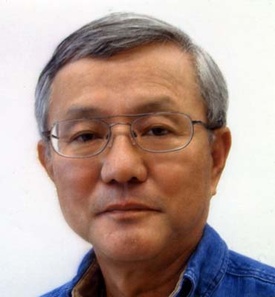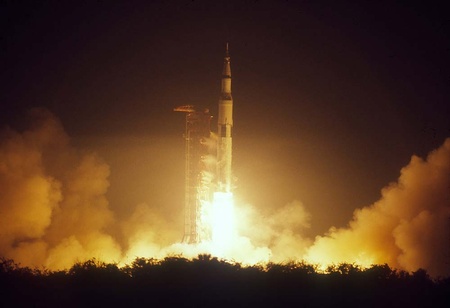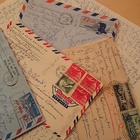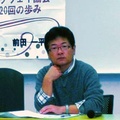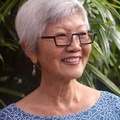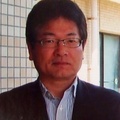Suwa Akira, a photographer for the Palm Beach Post at the time, photographed the late Morikami Sukeji (George Morikami), a Kyoto native who left the name "Morikami" behind to make the "Morikami Museum and Japanese Garden" in Florida. In the 1960s, Suwa was also one of those who traveled to America with dreams in mind. After arriving in America, he became a professional photographer and traveled around the US and the world. Let me introduce you to Suwa.
* * * * *
Inspired by Kenichi Horie and Minoru Oda
Suwa didn't originally go to America with the intention of becoming a photographer. A certain coincidence and the photography skills he had developed as a hobby led him to make a living in America.
Originally from Osaka, Suwa went on to study at Tokyo University of Agriculture and Technology, and in 1962, he spent several months doing farm work on a farm in California as part of his studies. In 1964, he took a year off from university to work at the Japan Pavilion at the World Expo in New York.
Attracted by the idea of a life in America, after graduation, Suwa happened to hear from an acquaintance of his father that a Japanese gardener in Tampa, Florida was looking for workers. He immediately applied, was accepted, and moved to Florida in 1967.
Five years earlier, in 1962, the news that Kenichi Horie had succeeded in sailing solo across the Pacific Ocean in a yacht spread across Japan. At the time, Mr. Suwa was inspired by this and wanted to try some kind of adventure himself. He also said that one of the reasons he went to America was that he was heavily influenced by Oda Makoto's book "Namae ga Mitemo Yaro," which describes what he saw and felt while traveling around the world.
The employer goes bankrupt
Life in Florida was exciting and fulfilling, and a year passed in the blink of an eye. However, the company he worked for there went under, and Suwa lost his job. At that time, his camera skills came in handy.
Suwa-san likes to take photos in his free time, and he often goes to take photos of high school football games when he happens to be approached by the owner of a local photo studio that takes photos for high school albums.
This led to the owner of the photo studio, who recognized Suwa's skills, inviting him to work at the studio. Since he didn't want to go back to Japan, he took up the offer as a godsend. He ended up working in Plant City, about 30 kilometers east of Tampa.
"Life is a strange thing. If you want to do something, you search hard for it. Then an opportunity will come before you and you can grab it. But if you don't have the will, you won't see it. I was glad I was wondering if there was a job out there," Suwa later recalled.
The road to becoming a newspaper company opens up
As he continued working in photography, he was introduced to a job as a photographer at the Tampa Tribune. Attracted to the world of photojournalism, Suwa applied after gaining some experience, and his skills were recognized. He was then able to take a new step forward as a photographer for the newspaper.
He continued to work energetically and made a name for himself by winning prizes in photography competitions such as those sponsored by the National Press Photographers Association.
Unlike Japanese newspapers, in the United States, there is no system of employment where students graduate from college and immediately start working at a national or local newspaper, and then stay at the same newspaper for the rest of their careers. It is common for people to build their careers at small community newspapers or local newspapers based in regional cities, and then gradually move to larger newspapers, or to move between different media.
Of course, this was all due to his ability, and his talent was recognized, so he received an offer from the St. Petersburg Times, which is based in St. Petersburg, located on the same Gulf Coast as the Tampa Tribune, and decided to change companies.
While there, he covered the opening of Disney World in Orlando, Central Florida, and the launch of Apollo 17, which landed on the moon in 1972, from Cape Canaveral.
While he was building his career, in his personal life he married an American woman, had children, and started a family.
Of course he had his share of failures, but in 1973 he was named Florida Newspaper Photographer of the Year. Then, this time in Florida, he received an offer from the Palm Beach Post in Palm Beach, in the mid-Atlantic coast, offering favorable terms, and he made a new start. In addition to daily single-shot photography, the paper also had the aspect of "picture stories," where multiple photos were combined to tell a story, which was appealing to Suwa.
Meeting and photographing Morikami Sukeji
Mr. Suwa worked on a long-term picture story of the Seminole Indians who lived in Florida, taking photographs there. This may have been due to the Palm Beach Post's policy, but it was still a good time for newspapers at the time, and they were allowed to take their time and research on one theme.
In March 1974, the head of the photography department said to Suwa, "There is a Japanese man who owns a large piece of land in Delray Beach, and we have tried to interview him many times, but everyone has turned him down. Even our number one photographer can't take pictures. Since you're Japanese, why don't you try interviewing him?"
At the time, Sukeji lived in an old trailer house at the end of a rough road in a cleared scrub forest, and almost every day he drove his old Ford tractor to the fields.
Suwa had only heard about Yamato Colony and Sukeji when his boss told him about it, and since he had a fixed job during the week, he decided to visit Sukeji on his day off. Not wanting to arouse suspicion, he identified himself as someone from a newspaper, but he didn't have a camera with him, so he introduced himself as "Suwa, from Japan, a photographer for a newspaper in Palm Beach."
Contrary to his expectations, Sukeji greeted him with a smile and in a good mood. However, even when Suwa spoke to him in Japanese, he always replied in English. As they casually talked in English about their recent situations, Sukeji, who is interested in agricultural techniques, learned that Suwa had graduated from Tokyo University of Agriculture, and the two of them had a lively conversation.
It soon became clear that Sukeji had a good grasp of Japanese, for there was a Sanseido Concise English-Japanese and Japanese-English dictionary on the table in the trailer house, and the bookshelves were overflowing with Japanese books and magazines.
I could see the spines of literary works such as "Alaska Story" (by Nitta Jiro), "Yoshitsune" (by Shiba Ryotaro), and "The Ecstatic Man" (by Ariyoshi Sawako), agricultural books such as "Introduction to Miniature Bonsai" and "Questions and Answers on Modern Agricultural Policy," books related to Tenrikyo, the religion the Okamoto family espouses, and special editions of the magazine King.
Among the English books were many related to agriculture, such as "The New Garden Encyclopedia" and "Organic Plant Protection," as well as "Sane Living In A Mad World - A Guide to the Organic Way of Life," which was reminiscent of Suketsugu's lifestyle.
(Titles omitted)
© 2020 Ryusuke Kawai


